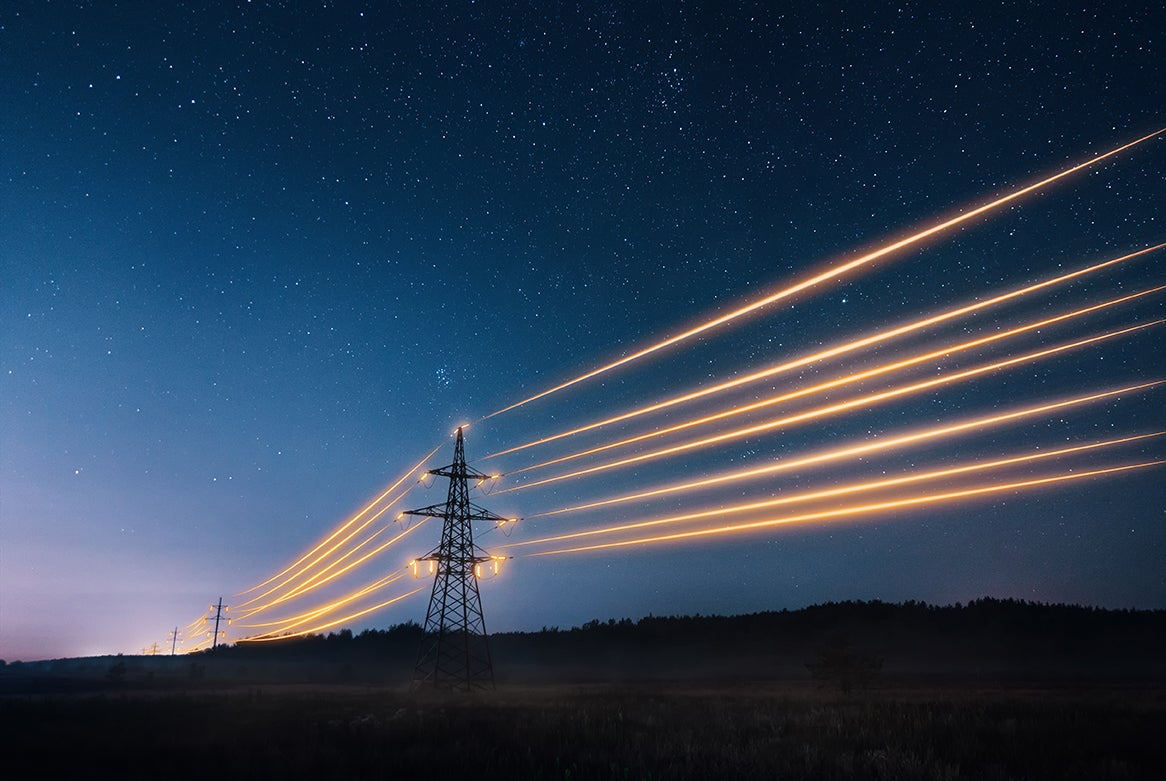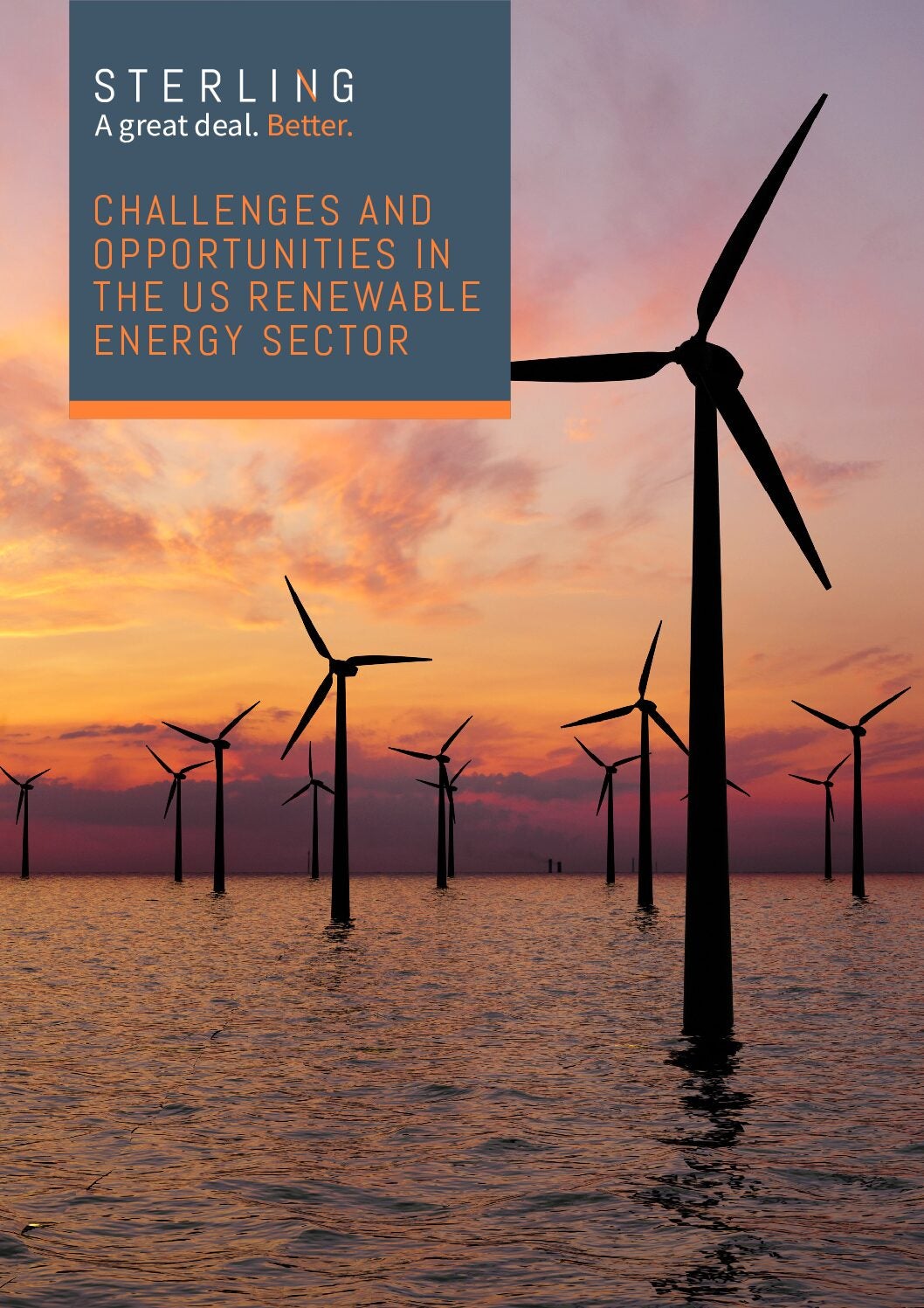
While businesses adapt to the energy transition, investors seek more clarity on what works best long-term, considering cost-effectiveness and climate risks. According to the International Energy Agency’s analysis, the global market for “key mass-manufactured clean energy technologies” would be worth around $650bn a year by 2030, which is three times more than today’s level. This will be possible only if “countries worldwide fully implement their announced energy and climate pledges”.
As such, the energy transition presents a big opportunity for equipment manufacturers, and the transition is in the interests of many. Renewable energy has become a lucrative industry in recent years, as wind and solar energy production costs have fallen drastically, so demand for facilities has risen.

US Tariffs are shifting - will you react or anticipate?
Don’t let policy changes catch you off guard. Stay proactive with real-time data and expert analysis.
By GlobalDataNew technologies, especially artificial intelligence (AI), have created big opportunities as digitalisation links different sectors to get better reliability and affordability, along with a lower-carbon energy supply.
Jose Aguas, vice president of sales for Mitsubishi Power Europe, speaks to Future Power Technology about energy transition and the role of digitalisation in achieving climate goals with cheaper and cleaner technologies.
Smruthi Nadig: Many companies, especially after the Russian invasion of Ukraine, have transitioned away from fossil fuels. What are your thoughts on today’s growing renewable energy industry?
Jose Aguas: Above all, the [war] reinforced the need for energy security, which was always on the agenda for most countries; there is no space for net zero targets without the security of supply. At the same time, the energy transition continues to be central to national energy strategies to accelerate the path towards cleaner and more affordable energy. It’s about balancing these two forces and addressing the energy trilemma, namely securing reliable energy and making it available to more people while [simultaneously] keeping that energy affordable and reducing reliance on carbon-emitting energy sources. Diversification of energy sources is crucial to achieving energy security.
Today, we are witnessing hydrogen emerging as a key enabler of the energy transition. The REPowerEU plan calls to produce 10 million tonnes of renewable hydrogen by 2030 and import an additional 10 million tonnes. At the same time, we’re seeing several European nations integrate hydrogen into their decarbonisation strategies.
For instance, the UK government is targeting up to 10GW of low-carbon hydrogen production capacity by 2030, with at least half of this from electrolytic hydrogen. It aims to have up to 1GW of electrolytic hydrogen and 1GW of CCUS-enabled hydrogen in operation or construction by 2025.
The German government recently announced a new National Hydrogen Strategy that doubles the national target for green hydrogen production by 2030 from 5GW to 10GW.
[Many] innovative decarbonisation technologies and solutions are available today, and we need all of them to make the energy transition. The energy systems of tomorrow will require an integrated ecosystem that is not only built on innovation but coupled with enabling policy, financial capital, and human capital. Achieving the scale required to meet global net zero targets will also require partnerships and collaboration with industry and government.Smruthi Nadig: How has Mitsubishi Power Europe allowed the reuse of surplus energy? Can it be converted to other valuable fuels?
Jose Aguas: One of the best ways to maximise surplus energy is to convert it to hydrogen. Hydrogen will be one of the key enablers of the energy transition and a core constituent of an eventual green and decarbonised energy system.
At Mitsubishi Power, we have harnessed our experience in hydrogen in sectors such as aerospace, steel, oil and gas, petrochemicals, chemicals, and shipping to develop hydrogen technologies for the power generation sector. Today, Mitsubishi Power has commercialised 30% hydrogen and natural gas co-firing for large-frame gas turbines. It aims to commercialise 100% hydrogen firing for small and mid-sized gas turbines starting in 2025, followed by large turbines by the mid-2040s.
Our Takasago Hydrogen Park in Japan is home to the world’s first centre for validation of hydrogen-related technologies. The park is co-located with the Takasago Machinery Works to support the commercialisation of hydrogen gas turbines using hydrogen as fuel. The T-Point 2 facility [validates] the long-term reliability of newly-developed technologies under the same conditions as an actual power plant, including [verifying] the next-generation of Air-Cooled large-frame gas turbines. Over the coming years, facilities this will be essential for developing “hydrogen ecosystems,” which aim to create a value chain that uses hydrogen for every step, from energy production to consumption.

In terms of hydrogen projects, Mitsubishi Power completed the world’s largest hydrogen fuel blending in a landmark project at the McDonough-Atkinson plant in Georgia in the US, with a blend of 20% hydrogen. This was the first demonstration project to validate 20% hydrogen fuel blending on an advanced-class gas turbine in North America.
In the Middle East, we’re working with Egyptian oil and gas company Alexandria National Refining & Petrochemicals Co (ANRPC) to install hydrogen combustion technology at its refinery plant in Alexandria. The plant provides 30% of Egypt’s gasoline supply for domestic consumption, and we will deliver fuel conversion solutions for a 100-ton/hour boiler, enabling it to fire 100% hydrogen. This project will enable ANRPC to achieve its goal of reducing its carbon footprint by 22,000 tons annually and adding hydrogen to its fuel mix will give it the flexibility to become more cost-efficient.
Smruthi Nadig: Many carbon capture technologies have failed in the past two years, and analysts predict continuous failure of the technology. What is the company doing differently to tackle this issue?
Jose Aguas: The biggest challenge is bringing all stakeholders on board in the transition. It will require funding, a deep understanding of climate change’s impacts, and a 100% commitment to net zero. First-class technology solutions are essential. The effort requires teamwork from lenders and financing institutions to original equipment manufacturers, policymakers and utilities.
As an equipment manufacturer, we are currently deploying the J-Series air-cooled gas turbine, which adds a steam cooling combustor to our turbines, creating shorter startup time while retaining a comparable performance.
Smruthi Nadig: What notable partnerships has the company made to develop other renewable energy, like green hydrogen, in Europe?
Jose Aguas: As an example, the UK-based Zero Carbon Humber Partnership is bringing together stakeholders ranging from energy companies to academic institutions and organisations like Mitsubishi Power to create the world’s first net-zero industrial cluster by 2040 through low carbon hydrogen, carbon capture, and carbon removal technology.
The anchor project is the Equinor-led Hydrogen to Humber (H2H) Saltend project, which will establish the world’s largest hydrogen production plant with carbon capture at PX Group’s Saltend Chemicals Park by 2040. H2H Saltend will convert natural gas to hydrogen and capture the resultant CO₂ emissions. In the first phase, the Saltend project could reduce emissions by 900,000 tonnes per year.
The Zero Carbon Humber Partnership could become an example of the value of diverse partnerships, with multiple stakeholders from different backgrounds and expertise. No company could single-handedly reach the scale required for the relentless pursuit of innovative solutions, nor could one organisation deliver the levels of research and development that will be needed to progress decarbonisation solutions to the extent that they can be universally instrumental in combatting climate change.
In Utah, we are partnering with Magnum Renewable Development on the Advanced Clean Energy Storage facility to provide a combined H₂ cycle [to] deliver the largest renewable hydrogen storage capacity of 1.6GW to Los Angeles. The plant will initially run on a blend of 30% green hydrogen and 70% natural gas starting in 2025 and incrementally expand to 100% green hydrogen by 2045.
Smruthi Nadig: AI and robotics are rapidly growing in Europe, especially for the energy transition. What kind of market growth do you see for AI in power management by 2030?
Jose Aguas: AI will play a key role in increasing efficiency and improving flexibility, [allowing] power plants to complement intermittent renewable energy sources better.
Our own Tomoni intelligent systems, based on the latest AI technology, will lead the charge to improve the efficiency of existing power plants, which is just as important as developing new clean energy plants.
The power plants of the future will be smarter, and with AI, they will have the data and analytics to work with renewable and hydrogen-based power sources as well as short-term and long-term energy storage to optimally support the energy needs of a sustainable society.
Smruthi Nadig: Mitsubishi Power Europe launched remote operations and maintenance analytics centres in 2021. Has the use of AI in the centres improved the power plant performance?
Jose Aguas: We tested our Tomoni systems at our grid-connected validation power plant well before we deployed it with customers. It uses AI simulation technology that rapidly responds to environmental shifts, ensuring the reliability of baseload operations at power generation facilities. Power plants using Tomoni systems generally have 2-4 fewer days of unplanned downtime and 3-4 fewer days of planned downtime per year than similar unconnected plants.
We aim to create a future that works for people and the planet by developing innovative power generation technology and solutions to enable the decarbonisation of energy. To this end, we have set our decarbonisation goal a decade ahead of global targets.
Time is of the essence, and it will take extraordinary collaboration and urgency – working hand in hand with our industry partners, policymakers and society to accelerate global decarbonisation before it is [too] late.





